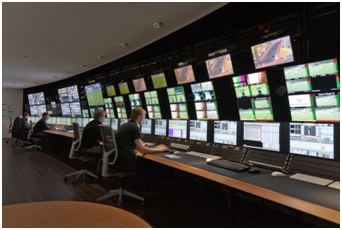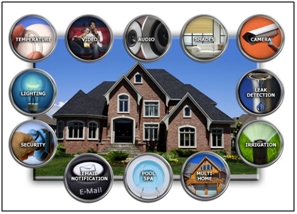Home › Electrical Engineering Forum › General Discussion › Development of Automated distribution system
- This topic has 0 replies, 1 voice, and was last updated 11 years, 8 months ago by
Steven Mill.
-
AuthorPosts
-
2013/07/01 at 3:32 pm #11033
Steven Mill
ParticipantIntroduction
The distribution system is vastly spread in the present age with the primary circuit starting from a sub-station and ending at the customer’s home. At this moment it is known to be the secondary service.
The voltage being received by the customer is of low voltage than that starting from the sub-station as it is divided to many customers along the way.
The voltage being utilized falls within the range of 2300- 35000 volts with huge dependence on the distance it has to cover, the amount of load and the utility standard practice. This makes the voltage distribution most suitable to less far areas.
The voltage transmission is usually carried out at high voltage. The high voltage first enters a transformer which is placed in a sub-station; the voltage gets reduced and after that distributed to various locations. Overhead pole lines or underground networking both ways can be utilized for the placement of conductors to be used during distribution.
Advantages
Efficient systems to monitor the transmission of voltage have been devised but not the distribution. This is where automated distribution systems can help. The advantages that this system has to offer include:
- A very important benefit is that the load on transmission lines could easily be managed because of these systems during blackouts. Any negligence may result into destabilization of the grid. Managing distribution channels is not well refined but still lots can be achieved with these distribution systems.
- The load demand in industrial and residential areas differs at different times. During the peak hours of voltage utilization, due to the distribution system the load demand can be decreased. This helps manage the load problem.
- Another great thing about this system is that the customers can be notified of the pricing tariff through real-time pricing (RTP). With this knowledge the customer can then manage the energy profile ultimately helping to minimize costs. Customer autonomy and privacy, both are maintained this way.
- Sensor and a control system fitted within the distribution system have led to the reduction in the outage time.
The distribution system has therefore benefitted in providing a way to adjust the loads and also to check for any kind of failure occurring in the system.
Distribution systems are connected to utility databases and other similar distribution system. In the circuit of a distribution network switching devices, voltage controllers and capacitors are all enclosed within a closed circuit control.
The reliability of the system is also increased due to the use of the automated distribution system.
New technologies in the field are continuously being sought. The transformer technology is also being renewed and solid state transformers which are capable of reducing the power being lost during the step-up and step-down voltage alterations.
Examples
An off-shot of the automated distribution system is the home automation. The aim of this technology is to provide comfort, ease, efficient management and above all greater security. The system covers the lighting, HVAC, heating, ventilation, air-conditioning, appliances, security locks and other systems requiring power. This can also prove to be very helpful if children or elderly or disabled individuals are present in the house.
Smartphone and tablets have played a huge role in the popularization of home automation system.
Through this system all the electrical devices in the home get connected to each other and to run the automation system the technology being employed is similar to that used in home entertainment systems, houseplant and yard watering system, system used to feed pet automatically, the domestic robots and also the system allowing changing of the scenes and environment in our homes. All this utilize the same technology.
These devices can be controlled personally by connecting them to a single computer or even through the internet.
All the devices in connection are integrated in a way that is easy, safe and efficient.
The concept of home automation system has long been around and visible in World Fairs and in science fiction. But the point limiting a more common usage of this concept is the complexity of the system, competition arising between the vendors, a number of incompatibility standards and the ultimate price of the system when dealt with all these issues. The price goes so high that the system can be seen in the home of only a few wealthy individuals or those choosing it as a mere hobby.
Conclusion
The main key points to be looked closely into while developing a distribution network automation system and that to a highly efficient one is the way that the system is going to be built, follow international standards, the requirements of the domestic and the industrial standards on which the system needs to be built, the technology involved in managing the control platform, to manage the information obtained coming from different devices and then to integrate it. The result will be a complete, up-to-date and a well-organized automation system.
The distribution and operation mode of these automation systems will change, also increasing the construction range of the system to build a highly informative, aligned and regulated automation system.
The development capacity of this system is very sustainable. Exceptional output is being expected from these systems with the advancements in these systems.
What do you think about it?
-
AuthorPosts
- You must be logged in to reply to this topic.


